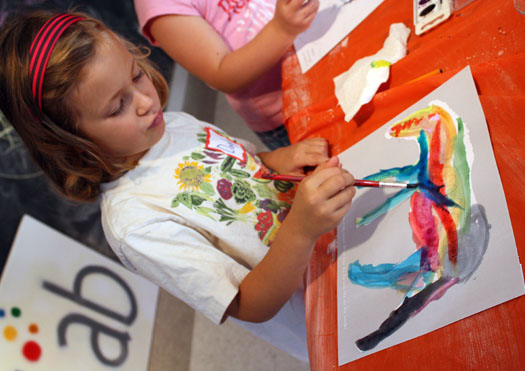 Kids and Art - Fun and Easy Watercolor Skills
Kids and Art - Fun and Easy Watercolor Skills
Try some of these easy and fun watercolor skills in the classroom or home. Watercolors are a fun and easy medium for kids and adults alike. Parents and teachers can easily clean up watercolor messes, and children enjoy the easily accessible paints. Watercolors are portable, too, and are usually less expensive than other painting and drawing mediums. Try some of these easy watercolor techniques next time you and your child or students are creating art with watercolors.
Wet on Wet Technique
Try a little art experiment. Fold a large piece of white paper in half. Wet one half with a water using a brush and leave the other half dry. Now the kids can experiment with the differences between wet brush on wet paper and wet brush on dry paper. Discuss the differences together and figure out when such a technique would be appropriate (painting a lake, for example, or a mist). You can also experiment with a drier brush on both the wet and dry sides of the paper.
Etching into the Paint
Texture can be added to a painting by using a sharp tool (ex. a toothpick, pencil, or paper clip) to etch in blades of grass, waves, hair, or hundreds of other texture ideas. Be sure to emphasize the importance of lightly etching in order to avoid making holes in the paper.
Taping
Use painter's tape (or inexpensive masking tape) to block of sections of the paper that will remain white afterwards. Artists use tape to keep sections pure white, to keep lines straight, or to keep colors from bleeding into other colors. One fun project is using small bits of tape all over a white sheet of paper. Paint the paper a dark blue or black for the night sky. Afterward, remove the tape, and suddenly the white spots become stars.
Blotting
Children should always have a few pieces of paper towels or napkins by their art station. Not only is this convenient for spills, but students can use bit of napkin to lighten dark colors or even make mistakes disappear through blotting. Napkins dipped a little bit in paint also provide a tool for creating foliage and texture in art pieces.
Blending Colors
Most consumer watercolor palettes are plastic. When you open the watercolor palette, the underside of the lid is usually sectioned off into shallow spaces. These small sections can be used to mix watercolor paints without changing the integrity of the original color. Try creating an orange-red with your child or class. Wet the soft bristle brush and dip it into the red. Dab some of the red paint into one of the empty sections. Wash the brush thoroughly, and dip the brush into the orange. Now mix the orange paint with the red paint. You have created an orange-red color without mixing up the original color palette. This is especially useful with lighter paint, such as yellow or white.














No comments:
Post a Comment
Mami Mozart would love to hear from you!